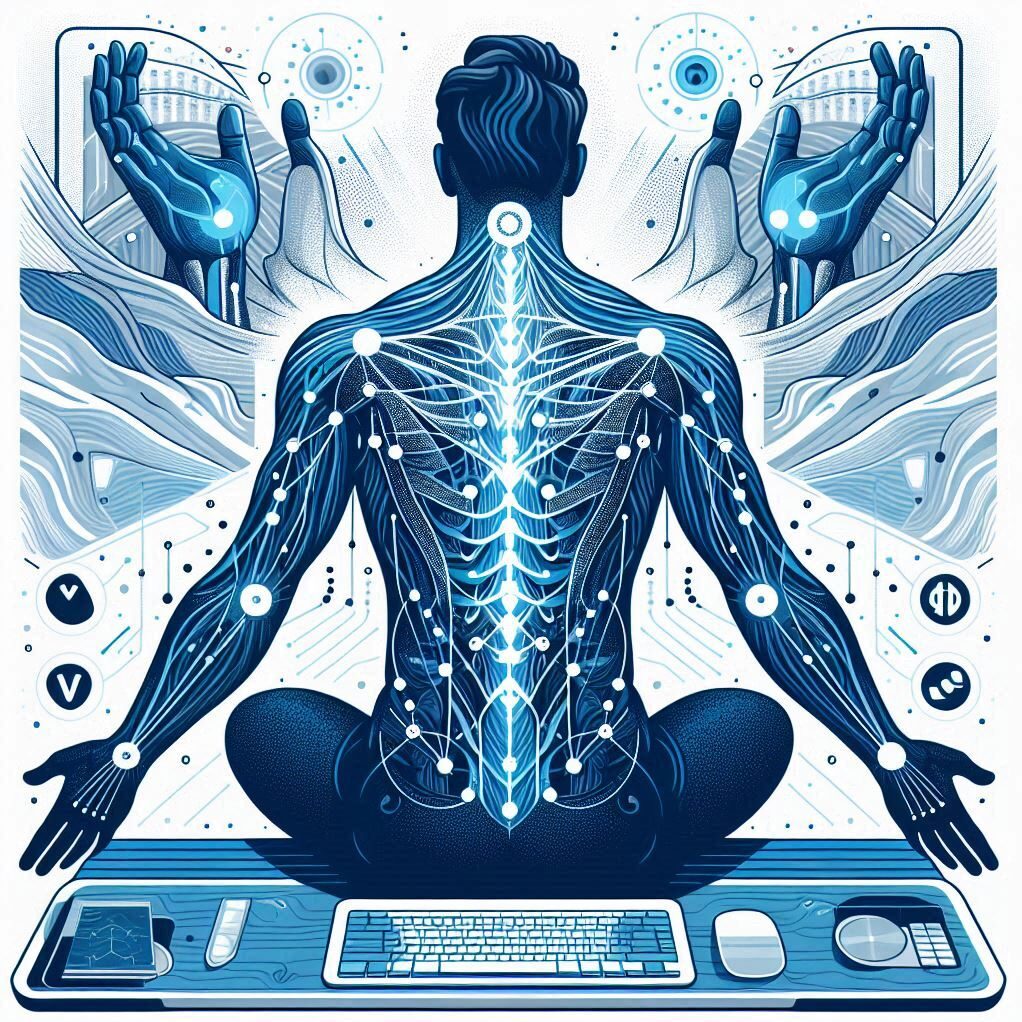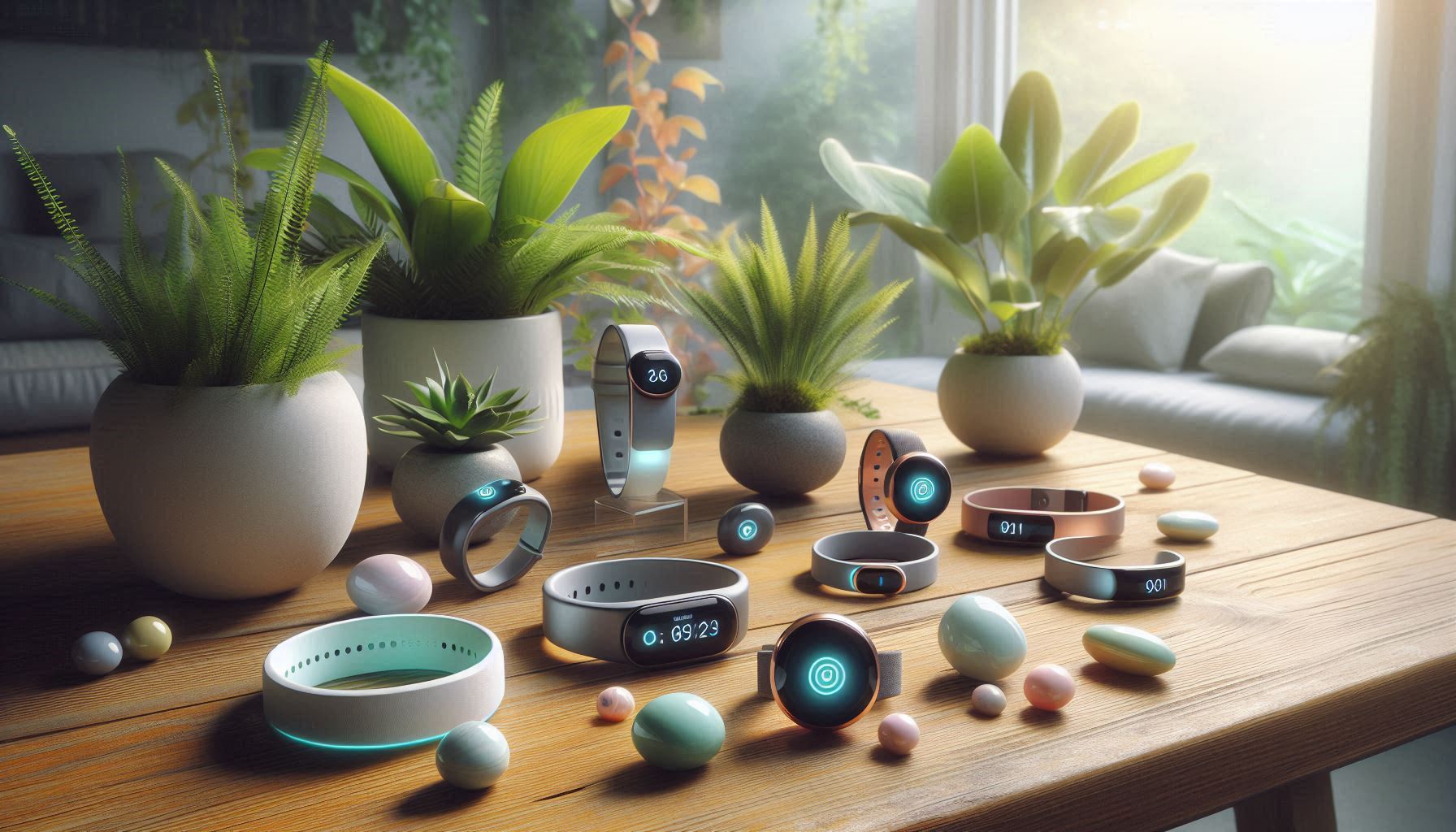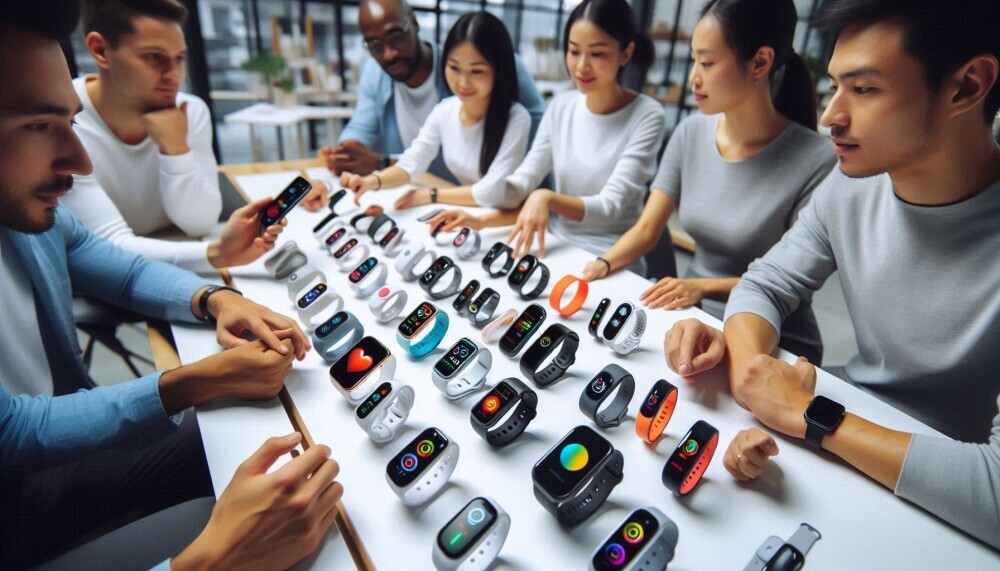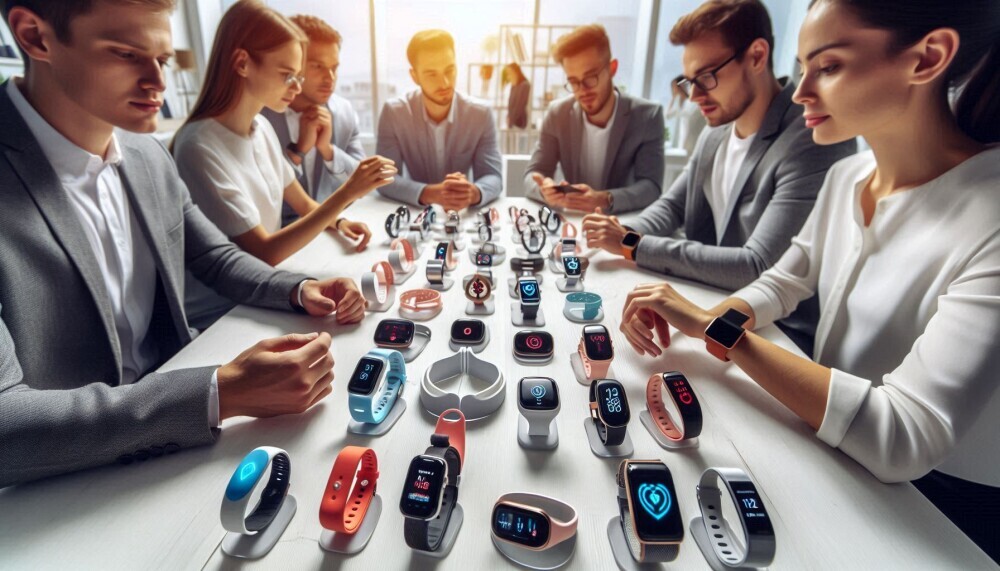The subject for our article today is How Accurate Are Stress Detecting Wearables? A Look at the Science. After all, if we are using wearables to help manage our stress levels, we want the data to be as accurate as possible. That makes perfect sense, of course. So, let’s get started!
Introduction
Everyone feels stress, but few of us know exactly when our body crosses the line from a helpful surge of energy to a draining state that hurts focus and mood. That is the promise of stress detecting wearables. Put a small sensor on your wrist or finger and it will watch your heart rhythm, your skin, your breathing, and even your temperature, then translate those signals into a simple prompt such as take a breath or time to recover. It sounds almost magical.
The truth is more interesting. These devices are built on real physiology and mathematics. They can be remarkably insightful in daily life when used well, yet they also have limits that users should understand. In this article we unpack what the sensors measure, how accuracy is tested, what affects real world results, and how to choose and use a device so that the data actually improves your day rather than adding more noise.
What stress detecting wearables actually measure
Modern wearables do not read your mind. They infer your state from a few reliable signals that the nervous system sends to the body.
- Heart rate variability
The tiny millisecond changes between heartbeats. Higher variability usually means a flexible, rested nervous system. Lower variability often reflects fatigue or strain. Most consumer devices estimate HRV from optical pulse readings taken at the wrist or finger. Chest straps measure the electrical signal directly and remain the reference for precision. - Electrodermal activity
Also called skin conductance. When the sympathetic branch of the nervous system is active, sweat gland activity increases, even in amounts you cannot see. That changes the electrical properties of the skin. EDA is a very sensitive marker of moment to moment arousal. - Respiration
Breathing rate and depth reveal a lot about stress. Many devices infer breath pattern from subtle chest movements or from the shape of the optical pulse wave. - Skin temperature
Under stress, blood is shunted toward the core, which can cool the skin slightly. Relative changes over time are more useful than the absolute temperature. - Motion and context
Accelerometers tell the algorithm whether you are moving, still, or asleep. This helps filter out noise and gives context to the other signals.
When you see a single stress score, the device is blending several of these inputs with a model trained on thousands of recordings. The best results come from combining signals rather than relying on any one alone.
How scientists evaluate accuracy
Accuracy means more than a device showing a number that looks sensible. In research, validation usually follows three steps.
Signal level validation
Compare the raw measurements to a reference.
HRV from a watch is compared to HRV from an electrocardiogram.
EDA from a wrist sensor is compared to laboratory electrodes on the fingers.
Temperature from the device is compared to a clinical grade sensor.
Protocol based stress testing
Researchers induce stress in controlled ways, such as timed mental arithmetic, public speaking tasks, or cold pressor tests. They examine whether the device detects the change at the right time and with the right magnitude.
Real world or ambulatory testing
Volunteers wear the device for days or weeks. Accuracy is judged by how well the device’s labels match diaries, event markers, or measures like salivary cortisol, and by how stable the metrics remain across daily life.
Common statistics include correlation with the reference, mean absolute error in milliseconds for HRV, and classification measures such as sensitivity and specificity when a device claims a moment as stressful or calm.
The strengths and limits of each signal
HRV
- Where it shines
HRV is excellent for daily trends. It reflects overall recovery from sleep, illness, and cumulative stress. Finger based sensors and rings tend to perform well at rest because they are less disturbed by arm movement. - Where it struggles
Wrist based optical readings can suffer during movement or in bright sunlight. Short recordings yield volatile values. HRV is not a direct emotion meter. It is a measure of autonomic balance, so it must be interpreted with context.
EDA
- Where it shines
EDA is great at detecting immediate spikes of arousal. It can highlight moments when you need a quick breathing break during the workday. - Where it struggles
The wrist has fewer sweat glands than the fingers, and dry environments reduce responsiveness. Temperature, lotion, and skin dryness can influence readings.
Skin temperature
- Where it shines
Trends across nights are informative. Rising temperature can signal illness or insufficient recovery, while stable nightly baselines suggest things are on track. - Where it struggles
Daytime absolute values are heavily influenced by room temperature, clothing, and sunlight. For stress purposes, focus on patterns rather than single numbers.
What affects real world accuracy
- Movement and fit
Loose straps or vigorous motion introduce optical noise. A snug but comfortable fit improves signal quality. - Skin tone and tattoos
Very dark inks and heavy tattoos can reduce optical signal quality. Newer multi wavelength sensors help, but placement still matters. - Environment
Heat, cold, or a hot shower shift skin temperature and EDA. The device cannot always know whether a spike came from stress or from the weather. - Caffeine, alcohol, and illness
All can lower HRV and raise heart rate, creating the appearance of stress. The trend over several days is more reliable than a single morning. - Sleep quality
Poor sleep depresses HRV and can raise perceived stress even if your day is easy. Wearables that capture sleep stages and timing provide helpful context. - Sampling schedule
Night time readings, taken while still and asleep, are more precise than daytime snapshots.
Device categories, key features, and typical prices
The following overview helps set expectations. Prices are approximate and vary by region and sales.
- Mindfulness headbands for meditation and sleep
Brain sensing headbands focus on EEG feedback for calm and on detailed sleep reports.
Typical price range is $300 to $400 in US dollars. - Rings for recovery and readiness
Small form factor, strong at night time HRV, temperature trends, and all day wearability.
Devices are usually $300 to $400 with an optional monthly app subscription for advanced insights. - Wrist straps for recovery and strain
Gym friendly designs that emphasize HRV, resting heart rate, and daily strain scores.
Many use a membership model starting around $25 to $35 per month. - General fitness watches with stress features
Broad health features including EDA, guided breathing, and stress scores alongside activity tracking.
Prices range from $120 to $300 depending on model.
Key features to look for
☑ Night time HRV captured during sleep
☑ EDA sensor for moment to moment arousal
☑ Skin temperature with nightly baseline
☑ Consistent battery life of three days or more
☑ Clear app with weekly trends and guidance
☑ Data export if you plan to analyse long term patterns
Benefits you can expect in daily life
- Better awareness of how lifestyle choices affect stress and recovery
- Timely nudges to pause, breathe, and reset during busy days
- Clearer links between sleep quality and next day mood
- More confident training choices by balancing strain and recovery
- A common language for coaching conversations and wellness programs
Pros and cons at a glance
Pros
☑ Objective feedback rather than guesswork
☑ Continuous tracking without manual entry
☑ Encourages healthy routines and breaks
☑ Good at spotting long term trends and early warning signs
Cons
☑ Moment to moment labels can be wrong during motion or heat
☑ Some devices require subscriptions for full features
☑ Not a medical diagnosis or a replacement for clinical care
☑ Data overload can create anxiety if you chase every dip
Who should use stress detecting wearables
- Knowledge workers who sit for long hours and juggle meetings. The prompts to breathe or walk can prevent cognitive fatigue.
- Athletes and active people who want to match training load to recovery.
- Students and exam takers who benefit from building calm routines and sleep discipline.
- People navigating high life stress such as caregiving or demanding travel schedules.
- Teams and organizations running wellness initiatives where aggregated trends inform scheduling and culture.
Who may not find them helpful
- People uncomfortable wearing sensors all day
- Anyone seeking a clinical diagnosis rather than wellness guidance
- Users who become more anxious when tracking numbers
How to get the best results
Build a strong baseline
Wear the device day and night for at least two weeks before making decisions. The first goal is to learn your personal range for resting heart rate, HRV, EDA responsiveness, and nightly temperature.
Anchor your day with simple rituals
- Morning check in
Note how sleep, alcohol, or late training affected your readiness. - Midday reset
When the device buzzes, take one minute to do slow nasal breathing. Five seconds in, five seconds out. - Evening wind down
Dim screens, stretch, and keep bedtime consistent. Night time data is where accuracy is highest.
Use trends, not single spikes
Zoom out to weekly or monthly views. Celebrate gradual improvements rather than chasing a perfect daily score.
Pair data with action
Each red flag should map to a behaviour.
Low HRV after a tough week means a lighter workout.
An afternoon EDA spike means a break outside and a glass of water.
A rise in nightly temperature means earlier bedtime and less caffeine.
Mind your settings
Turn on artifact rejection and motion filters if the app offers them. Keep firmware updated. Replace worn straps that loosen during the day.
Quick buying checklist
☑ Comfortable form factor you will wear daily
☑ Night time HRV with transparent reporting
☑ EDA or breathing prompts for on the spot regulation
☑ Temperature trend across nights, not just a daytime number
☑ Clear privacy settings and local data controls
☑ Battery life that fits your routine
Common pitfalls and how to avoid them
- Comparing your HRV to someone else
HRV is highly individual. Compare only to your own baseline. - Forgetting context
Long meetings, strong coffee, and a hot day can mimic stress. Label big events in the app to help the algorithm learn. - Sleeping with a loose strap
Night data drives most readiness scores. A snug fit transforms accuracy. - Expecting it to fix stress by itself
The device is a mirror. The change comes from the habits you adopt because of what you see.
6 Frequently asked questions
1. Are stress wearables medically accurate
They are accurate enough for personal wellness when used correctly, especially for trends. Clinical grade accuracy is found in medical devices that are more expensive and less convenient.
2. Is a ring more accurate than a watch
At rest and during sleep, rings often produce very clean HRV and temperature signals because fingers have strong blood flow and less motion. Watches offer more features during workouts but can be noisier for HRV while you move.
3. Can EDA tell the difference between excitement and anxiety
EDA detects arousal rather than the emotion itself. Excitement and anxiety can both cause a spike. You provide the context through labels and notes.
4. Will tattoos or dark skin tones spoil readings
Tattoos can interfere with optical sensors if the ink is dense. Move the device to clear skin. Modern sensors work across a wide range of skin tones, though multi wavelength designs tend to perform better.
5. Do I need a subscription
Basic features work without one on many devices, but deeper insights and long term trend reports often require a monthly fee. Weigh the ongoing cost against how much you will use those features.
6. Can these devices help with diagnosed anxiety
They can support therapy by building awareness and encouraging calm routines, but they are not a treatment. Always follow the plan you set with your clinician.
A realistic verdict on accuracy
If you use a good device consistently, wear it snugly, and focus on nightly data and weekly trends, stress detecting wearables can be very accurate for the purpose that matters most in daily life. They capture how your nervous system is coping and recovering. They are less reliable for rapid moment by moment labels in hot weather or during vigorous motion. That is not a failure of the idea but a reminder to pair the numbers with your experience.
In short, treat the device as a coach, not a judge. Let it nudge you to sleep a bit more, take a breath when your calendar turns red, and plan a recovery day when HRV dips. The combination of science based signals and simple habits is what delivers value.

Conclusion
Stress detecting wearables translate complex physiology into easy daily guidance. They observe heart rhythm variation, skin conductance, temperature, and breathing to paint a picture of how taxed your system is and how fast it bounces back. Accuracy is highest at night and across trends. During busy days it improves with good fit, mindful routines, and a willingness to label what you were doing when a spike appeared.
Used with that realistic mindset, these devices can lift your mood, sharpen your focus, and prevent overreaching at work and in training. They will not remove stress from your life, but they can help you respond to it with more skill. If you choose a form factor you enjoy, understand the signals, and act on the insights, the small graph on your phone can become a reliable companion on your path to steadier energy and better days.
Our Thanks!
We would like to express our sincere thanks for reading this article on How Accurate Are Stress Detecting Wearables? A Look At The Science. We hope that you have found it helpful with your search for a suitable wearable health tech device. You should read our related article which is titled Wearables For Mental Wellness: How Smart Devices Are Helping You Mange Stress.
Please let us know in the comments which type of wearable health tech device you are currently using or plan to buy in the future! The comments section is just underneath this article!
**Here is a bit of transparency. Our website www.vertevia.com does contain affiliate links and Amazon links. So, if you did make a purchase through the website, we may receive a small commission. This is at no extra cost to you whatsoever. It’s just a way for you to support us as we continue to bring you top quality content**
All the best!
Eamon



